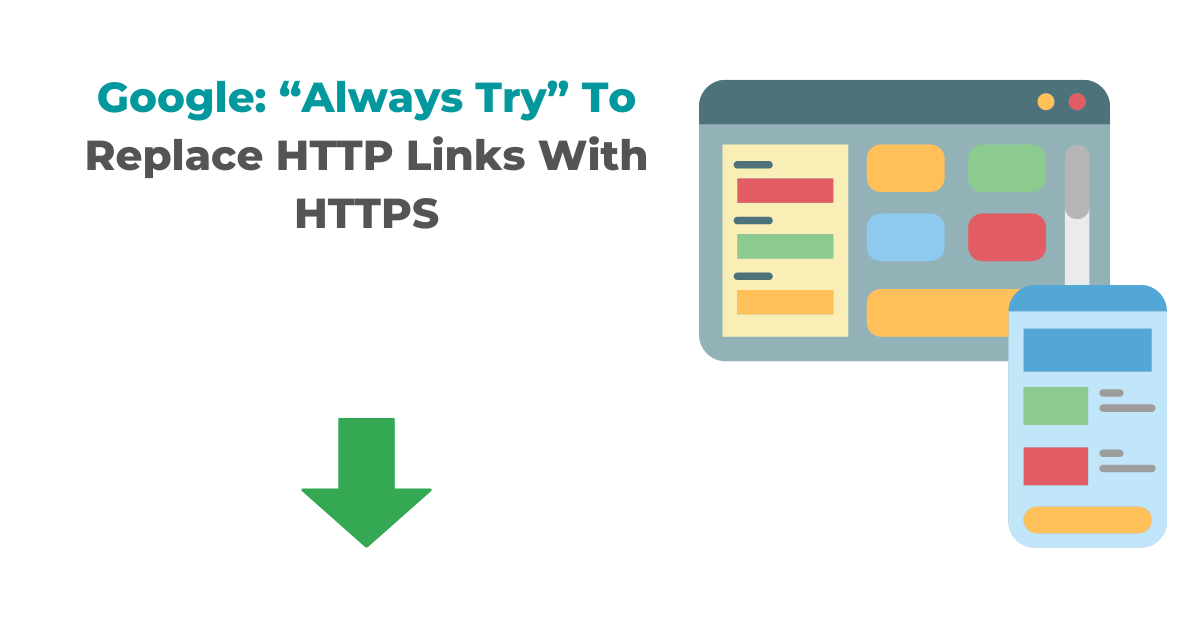In this article we are talking about Google: “Always Try” To Replace HTTP Links With HTTPS.

Google’s search advocate John Mueller says that you should always try to replace internal links pointing to HTTP URLs with newer HTTP versions.
It is said in a Reddit thread whether it is worth the effort to replace the internal HTTP link with the HTTPS versions even if there is already a redirect.

Many years ago Google’s Gary Elias said that it is not worth changing the link when there are proper redirects.
Now, Mueller says it’s “always” worth doing. Thankfully, it’s not difficult to massively replace HTTP internal links as other commenters in the thread state.
What Mueller has to say about replacing HTTP with HTTPS links and how to do it.
Replacing Internal HTTP links with HTTP Versions Mueller gives two reasons for replacing the old HTTP internal link.

Firstly it’s much healthier than having a bunch of redirects. And, unlike external links, you have complete control of the URL that is sent to the visitor.
As Mueller says changing the HTTP internal link will not have a noticeable impact on search rankings, but it is doable.
Google: “Always Try” To Replace HTTP Links With HTTPS
Why?
Changing links instead of relying on redirects can have a positive impact on webpage performance.
Anyone clicking on a link that redirects to HTTPS must first go through the HTTP version.
By removing the extra ‘hop,’ visitors can get to the content faster.
Also, relying on redirects for internal links is foolish. Many things can go wrong, such as redirect chains, redirect loops, and broken links.
If a site loads images with an HTTP URL, it may cause the browser to send a visitor not protected error message, allowing them to stay on your website.
Redirects eat up your crawl budget because each redirect counts as a crawled page. Google can potentially call a higher percentage of pages without redirects.
You can’t rely on redirects that work indefinitely. Redirectors can break or be removed while changing links ensures that they are changed forever.
With that said, here’s some information on how to replace internal links in a big way.
Mass Replacing Internal Links
Changing internal links automatically isn’t difficult, but the method may be different depending on how your site is built.
Massive replacement of internal links is as simple as running search and replace in a database. It can convert every reference to HTTP URL to an HTTP version in one fell swoop.
If you have a WordPress website, several plugins make this task easier such as “Better Search Replace“.
However, if you are not comfortable making such important changes, I recommend you to talk to your developer first.
Keep in mind that there’s always the risk of your website breaking when you make massive changes, so it’s essential to have a backup that you can back up.
HTTPS Migration
Whenever you want your website to be HTTPS you must follow these steps.
- Step- 1. First of all, you have to buy an SSL certificate.
- Step- 2. After that, you have to install the SSL certificate correctly.
- Step- 3. You do not miss taking a full backup of your website.
- Step- 4. Then after that, you have to change your HTTP link to HTTPS.
- Step- 5. You have to check your quota library.
- Step- 6. If you have maintained any external link which you can control, then update it.
- Step- 7. You have to create 301 redirects.
- Step- 8. You have to update your CDN SSL.
- Step- 9. Updating other tools and transactional email as well.
- Step- 10. Updating Google Search Console.
- Step- 11. Updating Google Analytics
HTTP And HTTPS Difference
- – HTTP URL starts with http:// while HTTP URL starts with https://.
- – HTTP is an unsecured protocol while HTTPS is secure.
- – HTTP does not have encryption, but HTTPS connections require encryption.
- – Talking about the security certificate, it is not needed in HTTP, but it is necessary for the identity of the website in HTTPS.
- – Data transfer in HTTP is through port 80, while port 443 is used in HTTPS.
- – Websites like a blog school, or college, which is created to share information, can do HTTP but sites like shopping sites social sites banking should use HTTPS so that sensitive data such as passwords, credit card details, etc. are protected.
Conclusion
We learned in this article today that Google: “Always Try” To Replace HTTP Links With HTTPS.
How should we make our website secure?
Our website has great potential for ranking on Google.
If you also have a website and why it is not there, then you need to pay attention to it today.
If you like my article then please comment below and don’t forget to share it with your friends.
Related Video
Article Original Source: Reddit



